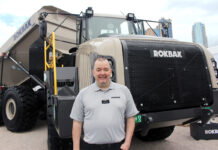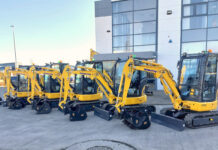Caterpillar Safety Services announces its new, five-session “MindShift for Leaders” training program that introduces participants to the principles of human and organizational performance (HOP) and helps implement them to enhance workplace safety.
The virtual sessions are structured to encourage participants to begin thinking and acting differently about how they lead and manage safety.
Caterpillar Safety Services is dedicated to finding new and innovative ways to improve workplace safety. “MindShift for Leaders” offers an alternative to conventional methods of managing safety systems that center around designing policies, standard work and processes based on how managers think people should work, versus how they actually work.
A foundation for the new program, HOP principles are a framework for talking about safety and creating a resilient safety culture by shifting organizations’ mindset to building more error-tolerant systems.
“Expecting perfection from workers is not realistic, and traditional methods of managing safety do not account for factors that can disrupt a system,” says Zach Knoop, manager, Caterpillar Safety Services. “A human and organizational performance mindset does not manage the incident itself but assists organizations with building more error-tolerant safety systems that allow people to stay safe, even when they make a mistake.”
Five HOP principles
HOP is not a step-by-step process, but a mindset built around scientific understanding of how people think, relate to one another in the workplace, communicate, set expectations and respond to each other. It offers next-level thinking by recognizing there are opportunities to make work activities more error-tolerant and moves from investigations that create anxiety to interactions that help entire organizations learn and improve.
Caterpillar Safety Services’ “MindShift for Leaders” program is presented in five 90-minute virtual sessions that align with the five HOP principles, which are:
- People make mistakes – Putting a worker in a position where their only form of defense against injury or fatality is performing perfectly creates an operator-dependent system. HOP manages the probability of having an incident and helps clients build systems that allow people to stay safe, even when they make a mistake.
- Blame doesn’t work – It’s instinct to blame someone or something after an incident, but blame is a useless strategy and detrimental to team morale. Forward-thinking, HOP changes the vantage point from focusing on the employee’s mistakes to understanding the organizational weaknesses that come together to result in an incident.
- Behavior is driven by context – People do as they do because it makes sense to them at the time. It is the context in which work occurs that mainly determines our behaviors and actions. Focus on the context and not the person.
- Learning is key to improving – Those closest to the work have the best knowledge of how work can be done safely. When leaders create an environment that fosters speaking up, we can learn and improve from both mistakes and successful normal work.
- Your response matters – A leader’s response carries the potential to either attract or repel followers, and, when mistakes happen, the response can either strengthen or weaken teams. Drawing from “frontline leaders,” empathy and emotional intelligence are taught as skills that need to be in the leadership toolbox.
“MindShift for Leaders” fits within the Mindset component of Caterpillar Safety Services’ four Components of a Resilient Safety Culture (Mindset, System, Ownership, Leadership).
Contact the Caterpillar Safety Services team for more information on “MindShift for Leaders” and other programs designed to help organizations create and support a resilient safety culture. More information on Caterpillar Safety Services can be found by visiting www.cat.com/safety.











